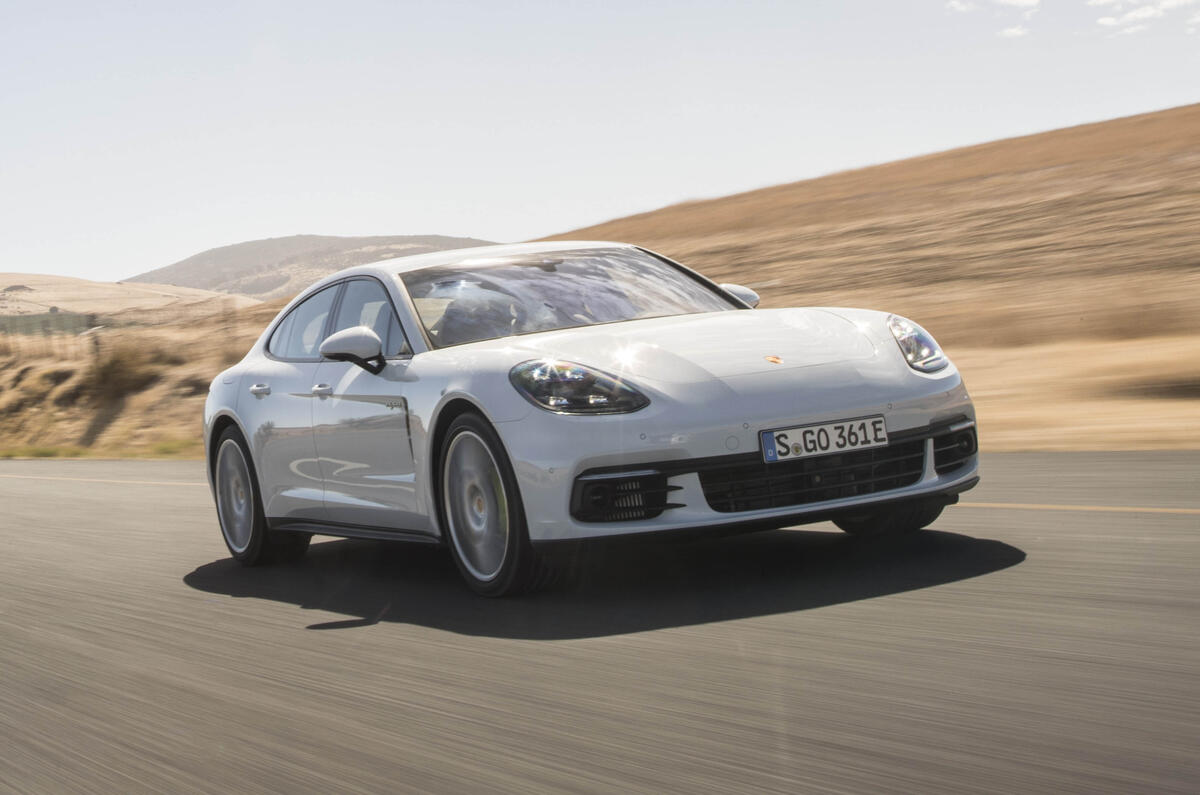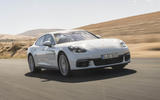What is it?
The Panamera 4 E-Hybrid is a Porsche designed primarily to appeal not to the chest-thumping, tarmac-tearing road warrior that lurks within most of us, but to your inner accountant, to whose presence we may less readily admit. The ‘4’ in the name denotes the number of driven wheels, while the ‘E’ means it can be plugged into your electricity supply.
We have, of course, been here before. The old Panamera was available not only as a hybrid but also as an e-hybrid and, contrary to instincts that asked why people didn’t just buy the cheaper, better diesel version instead, it actually sold reasonably well, accounting for 20% of British Panamera sales.
Applying the same logic, this one will do far better than that. It is, of course, quicker thanks to its brand new electrically boosted, Porsche-designed twin-turbo 2.9-litre V6, which provides 456bhp and a 516lb ft wall of torque at just 1100rpm. It knocks the 0-62mph time back from a brisk 5.5sec to a distinctly rapid 4.6sec. And yet, if official fuel economy figures are to be believed (which they most certainly are not), it will do more than 95mpg. The E-Hybrid will now cover 30 miles on electrical energy alone, versus the previous model's 22, and it will do 87mph before feeling the need to summon up a little internal combustion assistance. The old car would do just 84mph. For that, thank 134bhp of pure electrical power under your foot, instead of just 95bhp.
So it’s better in almost every measurable way and, being a brand new car, I should think so too. Less easily predictable is the fall in price from £88,967 for the old Panamera E-Hybrid to £79,715 for the new. That makes it almost £9000 cheaper than the 22bhp less powerful Panamera 4S.





















Join the debate
Add your comment
Panarama PHEV or Diesel?
The car gets the petrol engine to start up at 87mph, which means at the maximum UK speed of 70 you are still all-electric, assuming you haven't done your 30miles yet. The PHEV can be held in petrol mode , say from the Cotswolds to London and then switch to the fully charged battery ( overnight electricity or regenerative brake charging or petrol power trickle charging)for the quiet glide through the centre free of congestion charge.
We just have to face it, the roads ore overcrowded and motoring policy has moved on and is going too much further.I used to love my old Porsche 911S in the 1980s but nobody, absolutely nobody ( even with the Panamera or new GT2) is going to be able to drive from Brighton to London Bridge in 45 minutes as i once did. I was once even stopped on the M23 and let of with a warning after doing 135mph, try that these days!
Electric traction is the future, of course it was even 'the present' for Porsche in 1900.
addendum
Reason new version is cheaper:
One more thing about the beast
Panamera hybrid
I bought the diesel, have changed to the hybrid. It does indeed save a lot, to the extent I forget to go to a petrol station! It has improved immensely. Only time that is not so is when you travel long distance, as it is not so easy to recharge then. But the car is a marvel to drive